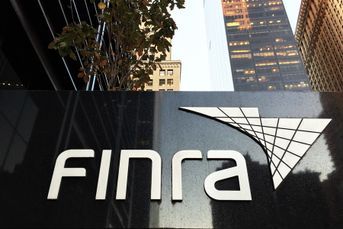Trizic rebrand shows difficult route for robo-advisers

Harvest to focus on banks and credit unions instead of independent advisers.
Trizic is officially pivoting away from providing a white-label digital advice platform for independent advisers in favor of providing “integrated savings and wealth solutions for banks and credit unions.”
The company is rebranding as Harvest Savings & Wealth Technologies and launching two new products: Goalkeeper, a new white-label solutions for financial institutions to offer automated micro-savings, and Signals, which will alert institutions when there is an opportunity to profitably move bank accounts upstream into a brokerage or trust account.
The move demonstrates just how tough the robo-advice business is getting, even for vendors selling to financial institutions and advisers instead of going directly to retail investors. It’s no longer enough to just offer automated investing.
[More: Robo-advisers are dead. Long live digital advisers]
In 2014, Trizic was one of the first robo-advisers allowed to integrate with TD Ameritrade’s Veo Open Access platform for registered investment advisers. The technology vendor was probably best known for powering John Hancock Financial’s digital advice program, MyPortfolio, and in 2018, Trizic partnered with Apex Clearing to help RIAs and broker-dealers develop a custom robo solution.
But providing advisers operational efficiencies isn’t the end-all, be-all, said Drew Sievers, chief executive of Harvest.
“When it comes to doing robos in those firms, it’s no longer just a technology play,” Mr. Sievers said. “The biggest problem is how do you attract people? That’s the mistake everybody makes.”
It turns out digital advice isn’t a “Field of Dreams,” build-it-and-they-will-come endeavor. Business-to-business vendors don’t have to spend on marketing to retail consumers like Wealthfront or Betterment must, but financial institutions aren’t getting the kind of adoption among consumers they hoped to achieve.
[Recommended video: Tailoring the experience to meet client needs]
The challenge for banks is they can earn more on small deposits in a savings account than in a brokerage account, Mr. Sievers said. There is no incentive for the bank’s retail business to move a $2,500 savings account over to the wealth division, hence the new Signals product was created to solve this problem.
The challenge for independent advisers is they don’t have the same kind of access to consumers as banks. Many RIA and IBD early adopters have struggled with robo-advice technology, and some have pulled the plug entirely. They also don’t have the same resources to continue re-investing in a technology platform, Mr. Sievers said.
“I don’t want to work with someone who doesn’t have a tech budget and a long-term vision,” he added. “The vast majority of banks have a very real savings and wealth business.”
Financial institutions across the board are taking a step back from robo-advisers to consider digital technology that fits better into the rest of the firm’s services, said Dennis Gallant, a senior analyst with Aite Group’s wealth management practice. Even direct-to-consumer robo-advisers are expanding into savings account and cash management features.
[More: The robo-advice market is growing, but changing]
“There’s only so much penetration that you’re going to make [with consumers],” Mr. Gallant said. “I have a robo, great, but does it integrate with the entire client experience?”
“Depositors are typically the most underserved group of consumers in the financial services marketplace,” Mr. Gallant said.
He also thinks Trizic’s (or, rather, Harvest’s) move to banks makes sense.
“Banks have always faced challenges because they are such siloed institutions, but if you’re looking for where a scalable business model works … they’ve got all the parts,” Mr. Gallant said.
Mr. Sievers said banks and credit unions have been the company’s focus since he took over leadership in 2016, but the company isn’t going to abandon its partnership with large wealth firms like John Hancock.
[More: Fintechs find new focus helping clients with cash management]
He also said the rebrand and pivot should not be seen as an indictment on the company’s growth. The company also announced $23 million in new funding, though Mr. Sievers wouldn’t disclose the investors because he said some of the deals are still closing.
But the focus moving forward will be helping banks fight back against digital threats with technology that integrates investing, banking and trusts.
“You can’t offer a robo in a silo,” he said. “Let’s help banks solve the real problem across the whole wealth spectrum.”
Learn more about reprints and licensing for this article.








